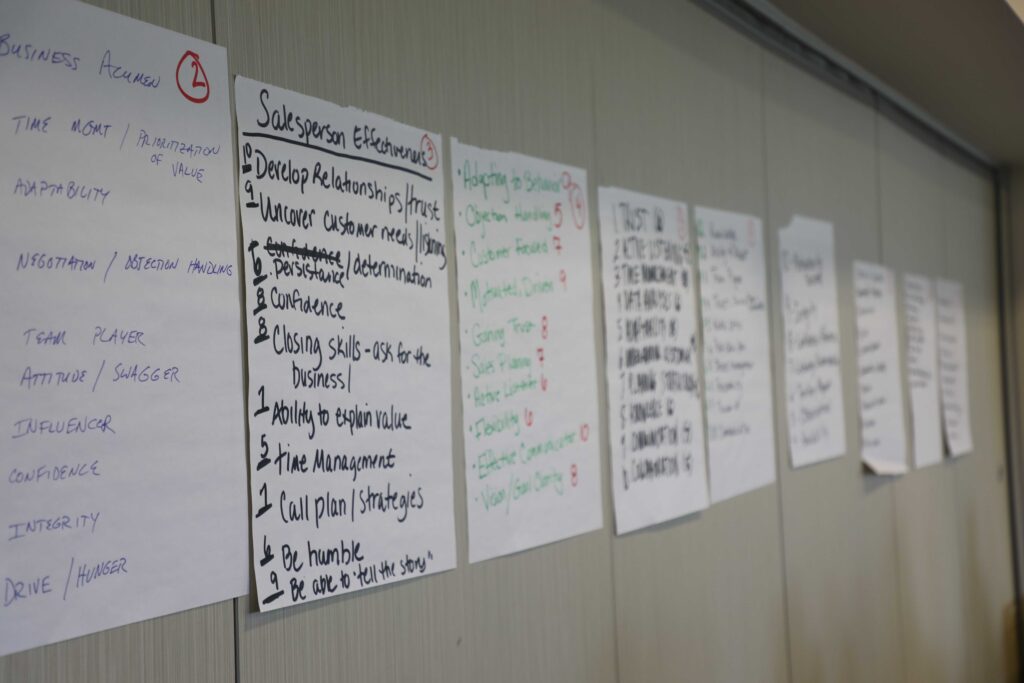Journal
Authors: Thuy D. Nguyen, Audhesh Paswan, Alan J. Dubinsky
Journal and date: Industrial Marketing Management, Volume 68, 2018, Pages 114-131
Reviewer
Masi Keshavarz, Research Project Manager
Dr. Scott Downey, Associate Director and Professor
Summary
The goal of this study is to provide a structural mapping of resources available to salespeople that can be applied differentially to enhance their effectiveness with different customer types and generate new sales opportunities. The study first sought to identify what resources (external and internal) are easily accessible or available to salespeople. An extensive review of past studies in sales lead the authors to identify the following three external and four internal resources available to salespeople.
External Resources:
- Firm-based tangible – company financial (e.g., relationship initiation and development expenses such as gifts, favors, holiday cards, entertainment—leasing offers), physical (e.g., meeting facilities, computers, transportation)
- Firm-based intangible – customer relationship management, customer intelligence and knowledge development processes, and other unique processes, such as supply chain management, enterprise resource planning, human resources, technology, and security management
- Firm market-based – intangible and external to the firm that can be categorized into relational and intellectual types e.g. brand reputation, partnerships and/or alliance reputations, and market share position.
Internal Resources:
- Personal tangible – salesperson’s physical features, professional appearance, standard working time, and personal time.
- Knowledge – salesperson’s knowledge of assigned products/services, assigned customers, competitors, assigned industry, and assigned territory.
- Skills – a salesperson’s selling skills, selling techniques, and selling strategies and tactics
- Accumulated success – salesperson’s professional reputation, position, power, responsibility, and networking relationship inside and outside the firm
The authors then examined which available resources salespeople might use more during the interest-generation stage within four types of customers; new, short-term, long-term, and win-back (lost). They used a panel of 346 experienced salespeople in product or service selling for their analysis. The results indicate that salespeople use different resources for different customers. They adapt their available resources based on the type of relationship quality that they have with each customer type.
What this means for Food and Agricultural Business
In today’s’ agribusiness market, with intense competition and high pressures to gain or maintain the market share, ever-increasing customer expectations, and limited resources, salespeople are a key contributor to the firm. Successful salespeople will be able to deliver superior value to their customers and to generate profitable outcomes for their firm by using appropriate resources for the right customers. To apply successful strategies to identify new sales opportunities while building, developing, maintaining or repairing relationship and trust with different customers; salespeople should understand the current position of the firm in the marketplace and its strategic emphasis, the types of resources and their potential effectiveness and constraints, and their different type of customers—new, short-term, long-term, and win-back. Not all resources are equally effective for all customer types; salespeople require using some resources more than others when dealing with different types of customers. For example, salespeople may utilize internal resources such as personal skills and knowledge more than external resources for win-back customers. Perhaps skill and the knowledge can help salespeople understand why a customer left the firm in the first place, and how to get him/her back with new offerings. Salespeople can advance satisfaction and trust by spending time on educating such a customer, reducing relationship uncertainties, and providing relevant information. Salespeople need to take on the role of entrepreneurs, assess the availability of resources to them, evaluate the importance of resources to each customer, perform benefit/cost analyses, and weigh the expected returns for the resources used.
The insights from this study can help agribusiness managers to learn about the kinds of resources sales personnel use in the selective investment and development of customer types. When hiring and training salespeople, assigning territories, or developing market strategies, firms should select and develop essential resources for opportunity identification that aligned with their customer portfolio. A roadmap of resources dedicated to clients is a good starting point in relationship sales training.



